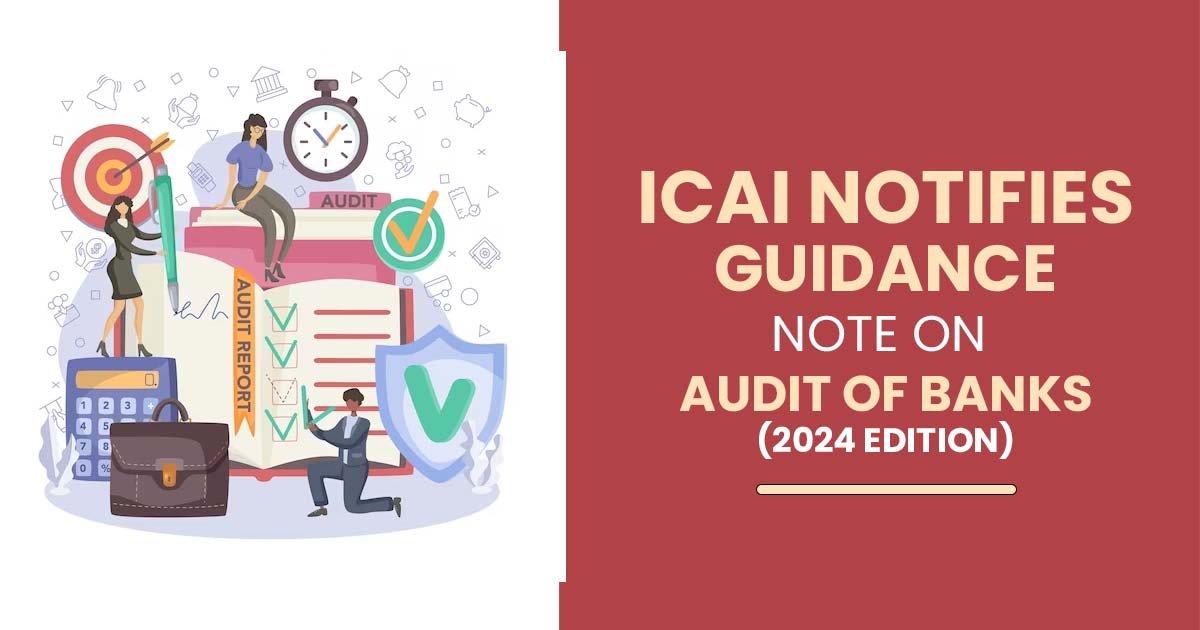
The Institute of Chartered Accountants of India (ICAI) has published the 2025 Edition of the Exposure Draft for its Guidance Note on the Audit of Banks. This complete document delivers chartered accountants with updated understandings, standards, and methodologies for performing audits in the evolving banking sector.
The document, which the Auditing and Assurance Standards Board (AASB) of ICAI released, summarizes the scope, framework, and best practices for auditing banks. It incorporates amendments in banking regulations, technological advancements in digital banking, and updates in risk management procedures. The guidance is to align these aspects with the auditing practices proposed to ensure that bank audits are operated with precision and transparency, complying with the highest professional standards.
Online Experts Available For Bank Branch Audit Questions
The season of bank audits is approaching, and the Reserve Bank of India (RBI) has made significant announcements directing the attention of Statutory Branch Auditors (SBAs). These possess revised guidelines on Basel III capital regulations, prudential norms for income recognition, asset classification, and provisioning of advances, and master directions on external commercial borrowings, trade credits and structured obligations, Cash Reserve Ratio (CRR) and Statutory Liquidity Ratio (SLR); transfer of loan exposures; and presentation & disclosures of financial statements of banks.
Check out the official Guidance Note: https://resource.cdn.icai.org/85207aasb68405.pdf
AASB Released the Guidance Note on Audit of Banks (2025 Edition)
The Auditing and Assurance Standards Board (AASB) of the Institute of Chartered Accountants of India (ICAI) is responsible for releasing an updated version of the “Guidance Note on Audit of Banks” each year. This guide is designed to help auditors effectively conduct audits of banks and their branches by providing clear and comprehensive instructions.
Check out the download of the Guidance Note. https://www.icai.org/post/guidance-note-on-audit-of-banks-2025-edition-details
Increase your business with SME IPO funding methods- Register now
The Exposure Draft is categorized into two sections:
Statutory Central Audit and Bank Branch Audit, each addressing particular operations and fields of focus for auditors. The Exposure Draft is available at the link: https://resource.cdn.icai.org/84176aasb67871.pdf
Key subjects are statutory compliance, treasury operations, information technology audits, risk management, credit monitoring, and the verification of financial documents. It also includes essential guidelines on auditing retail banking, international banking divisions, and government business departments, among others.
One of the significant aspects of the guidelines is its emphasis on the auditing process in the concern of digital banking and IT systems. The draft with the proliferation of digital banking services, furnishes the information into auditing digital lending platforms, cybersecurity frameworks, and compliance with RBI’s digital banking regulations.
Related: ICAI Set to Networking Guidelines for CA Firms
It also emphasizes the significance of IT general controls and the role of disaster recovery mechanisms in protecting banking operations.
The guidance note provides detailed procedures for auditing statutory requirements, including compliance with Know Your Customer (KYC) norms, Anti-Money Laundering (AML) measures, and directives from the Reserve Bank of India (RBI). It also offers practical insights for auditors on addressing challenges related to fraud detection, verifying advances, and ensuring the accurate presentation of financial statements.
The finalized guidance note is expected to become an essential resource for auditors, helping them navigate the complexities of auditing in a dynamic financial landscape.
The “Guidance Note on Audit of Banks (2025 Edition)” posted by the Institute of Chartered Accountants of India (ICAI) serves as an essential resource for auditors engaged in the statutory audit of banks in India. The documents are categorized into two main sections- Section A and Section B each proposing a complete framework and practical norms for the auditors to comply with while performing the audits for distinct banking departments and branches.
Section A – Statutory Central Audit
The first section is within the audit of distinct operational fields within a bank giving information about the chapters on the departments and operations that the auditors should calculate. These departments vary from Personal Banking (Chapter 1) and Retail Banking (Chapter 2) to Treasury Operations (Chapter 5) and Risk Management (Chapter 13). This section recaps the expectations, challenges, and specific audit considerations in each area.
Also, the section analyzes departments like the Information Technology and Digital Banking Division (Chapter 6), with a focus on how technological advancements affect banking processes and audit practices. The focus on Rural and Agricultural Business (Chapter 10) and Micro, Small, and Medium Enterprises (Chapter 9) ensures auditors comprehend the exceptional financial services and risk exposures in these segments. Also, the Consolidation and Balance Sheet Preparation chapter (Chapter 16) includes the preparation and audit of banks’ financial statements, ensuring they show the accurate financial health of the bank.
The **Certification** chapter (Chapter 19) proposes information on how the auditors certify the financial statements, a significant aspect of ensuring precision and clarity in banking operations. For the audit of Public Sector Banks, particular norms were mentioned in the special considerations chapter (Chapter 20), addressing the complexities engaged in auditing government-related business.
Section B – Bank Branch Audit
Section B focuses on the auditing processes for bank branches. It furnishes detailed guidance on executing the audit for the first time (Chapter 1), planning the audit (Chapter 2), and documentation (Chapter 3). The chapters conceal a wide collection of banking operations, including cash handling, advances (particularly in agriculture), investments, fixed assets, liabilities, contingent liabilities, and the profit and loss account. Auditors will discover specialized chapters on fraud detection (Chapter 21) and the recovery of non-performing assets (Chapter 25), key areas where attention to detail is necessary.
The **Bank Branch Audit and GST Compliance** chapter (Chapter 26) addresses the rising significance of Goods and Services Tax (GST) in the concern of banking operations, ensuring auditors have the required tools to compute the GST compliance across branches. There are chapters concentrated on auditing foreign exchange transactions (Chapter 23) and clearing the house operations (Chapter 24), which are important for banks that deal with international business and large-scale financial transactions.
Key Takeaways
For the auditors tasked with computing the integrity and operational efficiency of banking institutions the 2025 edition of the “Guidance Note on Audit of Banks” is a useful guide. The auditors whether performing the audits at the central or branch level will discover the comprehensive chapters of the documents required to ensure that the banks follow the statutory standards and maintain stronger financial health.
The same guidance note ensures that the auditors are prepared to navigate the complex ecosystem of modern banking where technological innovations, regulatory amendments, and diverse financial products need an adaptive and thorough audit procedure
ICAI has invited stakeholders—such as auditors, banking professionals, and regulators—to submit their comments on the draft. Feedback can be sent via email to aasb@icai.in or addressed to the Secretary of the AASB at ICAI Bhawan, New Delhi.







